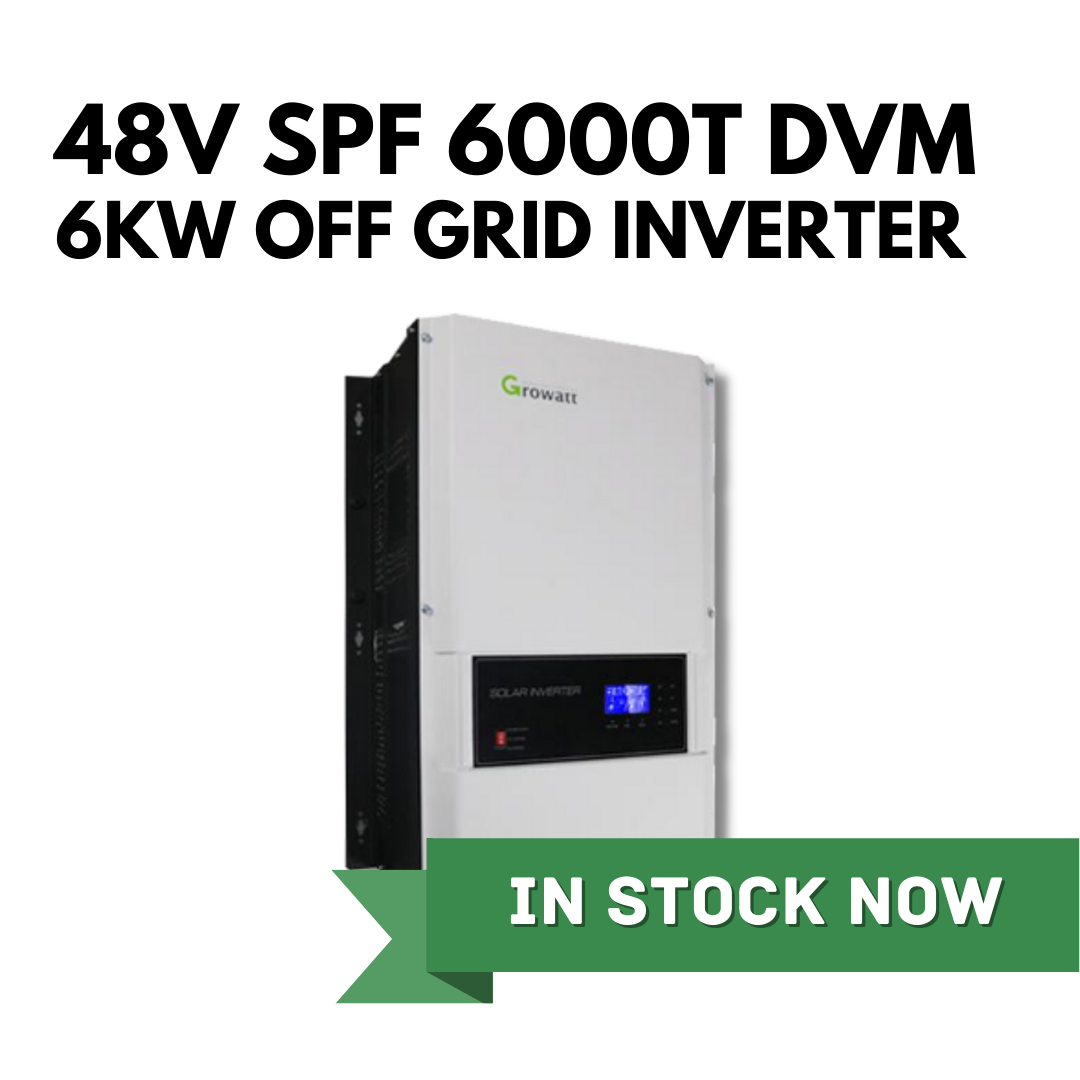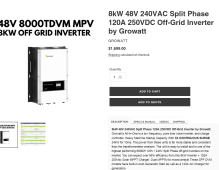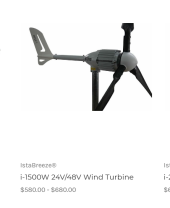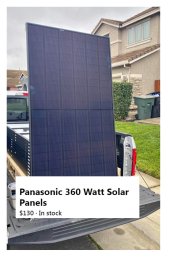Hello,
I would be grateful for some help wrapping my head around the details of planning an off-grid system. I’m a bit like a deer in headlights at this time. Any help would be great.
I’m living in a Tiny Home for nearly a year now, my monthly power use has been 200kWh or less, never higher.
I’ve purchased a shipping container to be my “power station.” My intention is to cover the 7’x40’ roof with solar panels and use space inside for the inverter, batteries, and so on.
The container gets generally good sun exposer, both summer and winter mornings there is a bit of shading on about 20% of the roof from a tree for a couple of hours.
I would like to oversize the system right off the bat, by about 50%. And also be able to expand it.
I'm located in Northern California
I see Signature Solar has some Growatt inverters on sale for nearly 40% off, I’m wondering if this might be a good purchase?

I would be grateful for some help wrapping my head around the details of planning an off-grid system. I’m a bit like a deer in headlights at this time. Any help would be great.
I’m living in a Tiny Home for nearly a year now, my monthly power use has been 200kWh or less, never higher.
I’ve purchased a shipping container to be my “power station.” My intention is to cover the 7’x40’ roof with solar panels and use space inside for the inverter, batteries, and so on.
The container gets generally good sun exposer, both summer and winter mornings there is a bit of shading on about 20% of the roof from a tree for a couple of hours.
I would like to oversize the system right off the bat, by about 50%. And also be able to expand it.
I'm located in Northern California
I see Signature Solar has some Growatt inverters on sale for nearly 40% off, I’m wondering if this might be a good purchase?

6kW 48V 240VAC Split Phase 80A 150VDC Off-Grid Inverter by Growatt 6000w
low frequency SPLIT PHASE EG4 GYLL 6000W 6KW USA GRID OFF GRID-TIE INVERTER SOLAR POWER CONVERTER GENERATOR SUNPOWER SUNPRO SOLARK BIG BATTERY LITHIUM HOME BACKUP RESIDENTIAL SOLAR SYSTEM SPLIT-PHASE 120VAC CHARGE CONTROLLER BATTERY CHARGER 18KW SOLAR INSTALLATION SOLAR PRICING CELL SOLAR...
www.signaturesolar.com






